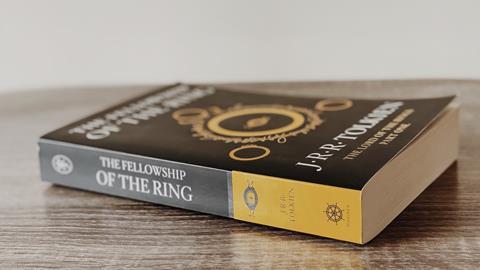Dr Holly Ordway, author of Tolkien’s Faith shares how a memorial cross spoke powerfully to Tolkien of Jesus’ death and resurrection
Ruth Jackson spoke to Dr Holly Ordway, author of Tolkien’s Faith, about what Holy Week meant to him as a devout Catholic. Below is an adaptation of some of her insights. You can hear the full interview on The CS Lewis Podcast here.
Holy Week
In some senses, every Sunday is a little Easter, a celebration of the resurrection. But Easter is a big celebration of it, the high point of the year. And for Tolkien, as a Catholic, it would be led up to by the period of Lent – 40 days that are more penitential with fasting, different prayers, and where everything in the church is more sombre.
Then Holy Week takes us through, almost in real time, the last few days of Jesus’ life from the entry into Jerusalem, Good Friday, the crucifixion, Holy Saturday – that in between time – and then Easter Sunday, the full beauty of the resurrection.
It’s a very powerful narrative. In a sense, it really brings you into the biblical story. It’s not just knowing about it, you really become participatory in a profound way.
Read more:
How Holy Week brings hope
What is Holy Week and why does it matter?
The bedrock facts of the resurrection
Is there historical evidence for the bodily resurrection of Jesus?
Good Friday
As a Catholic, on Good Friday, there is the veneration of the cross. Veneration is not worship, we should be clear on this. It is an honouring, it’s recognising that it’s through the cross, through our Lord’s death that we get to Easter. We want to get to Easter, but we have to recognise the price that was paid to get us to Easter. Therefore, that veneration of the cross on Good Friday is a way of kind of bringing that that home to everybody. That was a really important part of Holy Week for Tolkien.
One of the discoveries I made in researching Tolkien’s faith was a crucifix in the little parish church of St Gregory and St Augustine in Oxford, where Tolkien worshipped for about 20 years. As a parishioner, he would have gone to the Holy Week liturgies there.
The crucifix that is now above the altar there has a little plaque on it, which says that it was given in memory of Captain Basil Brooks who died on the Somme in the Great War. As I talked with the pastor there, I learned that this cross used to be the one they used during Holy Week for veneration. It was carried in procession and held up for people to come forward and either kiss or touch. It is very incarnational to touch things, it is very earthy.
This crucifix was given in honour of the late Basil Brooks by his widow Gertrude. It is a very beautiful memorial. I started thinking about the dates on the plaque and realised that he was one of Tolkien’s contemporaries. He was an Oxford man, recently married, as Tolkien was. And Brooks was killed on the front, the day before Tolkien went over the same frontlines on the Somme. So, there’s really a sense in which it could have been Tolkien. It could easily have been the John Ronald Reuel Tolkien memorial cross, given by his grieving widow, Edith.
Get access to exclusive bonus content & updates: register & sign up to the Premier Unbelievable? newsletter!
Death and new life
In this memorial crucifix, you get the image of our Lord suffering for us, and it links up with the suffering and death that Tolkien saw on the front lines, the knowledge that men like him had laid down their life for their friends. It would have brought home the immediacy of death. And I think that is a really important part of Good Friday and the Holy Week liturgy, because we all are going to die.
This is not something most of us like to think about. But we should, at some point, and for Tolkien, when he would go forward and touch the crucifix, he would have seen that little brass plaque and been reminded that it could have been him.
And then, of course, that leads into the promise of resurrection, because we will die. But that’s not the end. And so I think that very incarnational moment, that connecting up of his own memories, the horrors of the war, the sacrifice of Captain Basil Brooks, brought it home in a way that I imagine probably helped to make it more real. Death is a real thing. Resurrection is a real thing. I found it quite moving to realise that connection.
This is an adaptation of an interview Ruth Jackson did with Dr Holly Ordway, author of Tolkien’s Faith. You can hear the full interview on The CS Lewis Podcast here.























